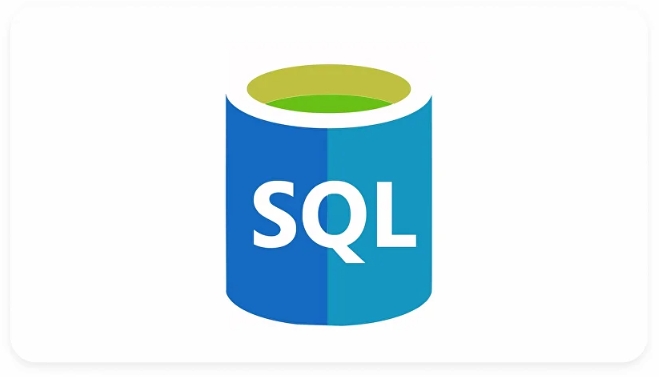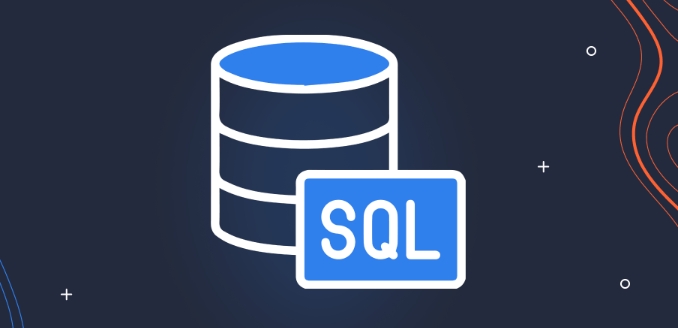How to get the year, month, or day from a date in SQL?
Aug 01, 2025 am 07:22 AMExtracting year, month or day information from dates in SQL can be achieved through built-in functions of different databases. 1. Use the EXTRACT function (suitable for PostgreSQL, MySQL, Oracle, etc.), with the syntax as EXTRACT(YEAR/MONTH/DAY FROM date_column); 2. Use the DATEPART function (suitable for SQL Server), with the syntax as DATEPART(year/month/day, date_column); 3. Use the YEAR(), MONTH(), DAY() functions (suitable for MySQL only), with the syntax as YEAR(date_column), etc. Different databases apply different functions, the logic is consistent but the syntax is different, so the corresponding method needs to be selected according to the specific database.

Extracting year, month or day in dates in SQL is actually very common, and most mainstream database systems provide corresponding functions to handle. Different databases may have slightly different syntax, but the basic idea is consistent: use built-in functions to extract the specified part from the date field.

The following is a few common databases as examples to introduce how to extract year, month and day information.
Use EXTRACT function (suitable for PostgreSQL, MySQL, Oracle, etc.)
EXTRACT is a relatively common method that can be used to obtain specific parts of the date:

SELECT EXTRACT(YEAR FROM order_date) AS order_year, EXTRACT(MONTH FROM order_date) AS order_month, EXTRACT(DAY FROM order_date) AS order_day FROM orders;
- YEAR/MONTH/DAY is the part you want to extract.
- This method is more versatile in multiple database systems and is suitable for writing statements with strong compatibility.
Notice:
- In MySQL,
EXTRACT(MONTH FROM order_date)returns an integer month (1~12). - Oracle is case sensitive, and field names should be wrapped in double quotes, such as
"order_date".
Using DATEPART (for SQL Server)
If you are using SQL Server, then use the DATEPART function:

SELECT DATEPART(year, order_date) AS order_year, DATEPART(month, order_date) AS order_month, DATEPART(day, order_date) AS order_day FROM orders;
- The first parameter is the part you want to extract, such as year, month, and day.
- It returns integers, which are convenient for grouping, sorting and other operations.
Tips:
- If you want to aggregate according to "year and month", you can combine it like this:
SELECT DATEPART(year, order_date) * 100 DATEPART(month, order_date) AS year_month, COUNT(*) AS total_orders FROM orders GROUP BY DATEPART(year, order_date) * 100 DATEPART(month, order_date);
Use YEAR() , MONTH() , DAY() (for MySQL)
MySQL provides a simpler function to extract year, month, and day:
SELECT YEAR(order_date) AS order_year, MONTH(order_date) AS order_month, DAY(order_date) AS order_day FROM orders;
- These functions are more intuitive to write and easy to remember.
- However, these functions are only applicable to MySQL and cannot be directly migrated to other databases.
summary
- If you are using newer versions of PostgreSQL, Oracle, or MySQL, prioritize
EXTRACT. - If you are using SQL Server, then use
DATEPART. - MySQL users can use
YEAR(),MONTH(), andDAY(), which is simple and convenient.
Basically, these methods, although the writing methods are different, the logic is similar. The key is to select the corresponding function based on the database you are using.
The above is the detailed content of How to get the year, month, or day from a date in SQL?. For more information, please follow other related articles on the PHP Chinese website!

Hot AI Tools

Undress AI Tool
Undress images for free

Undresser.AI Undress
AI-powered app for creating realistic nude photos

AI Clothes Remover
Online AI tool for removing clothes from photos.

Clothoff.io
AI clothes remover

Video Face Swap
Swap faces in any video effortlessly with our completely free AI face swap tool!

Hot Article

Hot Tools

Notepad++7.3.1
Easy-to-use and free code editor

SublimeText3 Chinese version
Chinese version, very easy to use

Zend Studio 13.0.1
Powerful PHP integrated development environment

Dreamweaver CS6
Visual web development tools

SublimeText3 Mac version
God-level code editing software (SublimeText3)
 How to find columns with a specific name in a SQL database?
Jul 07, 2025 am 02:08 AM
How to find columns with a specific name in a SQL database?
Jul 07, 2025 am 02:08 AM
To find columns with specific names in SQL databases, it can be achieved through system information schema or the database comes with its own metadata table. 1. Use INFORMATION_SCHEMA.COLUMNS query is suitable for most SQL databases, such as MySQL, PostgreSQL and SQLServer, and matches through SELECTTABLE_NAME, COLUMN_NAME and combined with WHERECOLUMN_NAMELIKE or =; 2. Specific databases can query system tables or views, such as SQLServer uses sys.columns to combine sys.tables for JOIN query, PostgreSQL can be used through inf
 How to backup and restore a SQL database
Jul 06, 2025 am 01:04 AM
How to backup and restore a SQL database
Jul 06, 2025 am 01:04 AM
Backing up and restoring SQL databases is a key operation to prevent data loss and system failure. 1. Use SSMS to visually back up the database, select complete and differential backup types and set a secure path; 2. Use T-SQL commands to achieve flexible backups, supporting automation and remote execution; 3. Recovering the database can be completed through SSMS or RESTOREDATABASE commands, and use WITHREPLACE and SINGLE_USER modes if necessary; 4. Pay attention to permission configuration, path access, avoid overwriting the production environment and verifying backup integrity. Mastering these methods can effectively ensure data security and business continuity.
 When to use SQL subqueries versus joins for data retrieval.
Jul 14, 2025 am 02:29 AM
When to use SQL subqueries versus joins for data retrieval.
Jul 14, 2025 am 02:29 AM
Whether to use subqueries or connections depends on the specific scenario. 1. When it is necessary to filter data in advance, subqueries are more effective, such as finding today's order customers; 2. When merging large-scale data sets, the connection efficiency is higher, such as obtaining customers and their recent orders; 3. When writing highly readable logic, the subqueries structure is clearer, such as finding hot-selling products; 4. When performing updates or deleting operations that depend on related data, subqueries are the preferred solution, such as deleting users that have not been logged in for a long time.
 Comparing Different SQL Dialects (e.g., MySQL, PostgreSQL, SQL Server)
Jul 07, 2025 am 02:02 AM
Comparing Different SQL Dialects (e.g., MySQL, PostgreSQL, SQL Server)
Jul 07, 2025 am 02:02 AM
SQLdialectsdifferinsyntaxandfunctionality.1.StringconcatenationusesCONCAT()inMySQL,||orCONCAT()inPostgreSQL,and inSQLServer.2.NULLhandlingemploysIFNULL()inMySQL,ISNULL()inSQLServer,andCOALESCE()commonacrossall.3.Datefunctionsvary:NOW(),DATE_FORMAT()i
 How to find the second highest salary in SQL
Jul 14, 2025 am 02:06 AM
How to find the second highest salary in SQL
Jul 14, 2025 am 02:06 AM
There are three core methods to find the second highest salary: 1. Use LIMIT and OFFSET to skip the maximum salary and get the maximum, which is suitable for small systems; 2. Exclude the maximum value through subqueries and then find MAX, which is highly compatible and suitable for complex queries; 3. Use DENSE_RANK or ROW_NUMBER window function to process parallel rankings, which is highly scalable. In addition, it is necessary to combine IFNULL or COALESCE to deal with the absence of a second-highest salary.
 What is the difference between SQL and NoSQL
Jul 08, 2025 am 01:52 AM
What is the difference between SQL and NoSQL
Jul 08, 2025 am 01:52 AM
The core difference between SQL and NoSQL databases is data structure, scaling method and consistency model. 1. In terms of data structure, SQL uses predefined patterns to store structured data, while NoSQL supports flexible formats such as documents, key values, column families and graphs to process unstructured data; 2. In terms of scalability, SQL usually relies on stronger hardware on vertical expansion, while NoSQL realizes distributed expansion through horizontal expansion; 3. In terms of consistency, SQL follows ACID to ensure strong consistency and is suitable for financial systems, while NoSQL mostly uses BASE models to emphasize availability and final consistency; 4. In terms of query language, SQL provides standardized and powerful query capabilities, while NoSQL query languages ??are diverse but not as mature and unified as SQL.
 What is a composite primary key in SQL?
Jul 08, 2025 am 01:38 AM
What is a composite primary key in SQL?
Jul 08, 2025 am 01:38 AM
AcompositeprimarykeyinSQLisaprimarykeycomposedoftwoormorecolumnsthattogetheruniquelyidentifyeachrow.1.Itisusedwhennosinglecolumncanensurerowuniqueness,suchasinastudent-courseenrollmenttablewherebothStudentIDandCourseIDarerequiredtoformauniquecombinat
 Advantages of Using Common Table Expressions (CTEs) in SQL.
Jul 07, 2025 am 01:46 AM
Advantages of Using Common Table Expressions (CTEs) in SQL.
Jul 07, 2025 am 01:46 AM
The main advantages of CTEs in SQL queries include improving readability, supporting recursive queries, avoiding duplicate subqueries, and enhancing modular and debugging capabilities. 1. Improve readability: By splitting complex queries into multiple independent logical blocks, the structure is clearer; 2. Support recursive queries: The logic is simpler when processing hierarchical data, suitable for deep traversal; 3. Avoid duplicate subqueries: define multiple references at a time, reduce redundancy and improve efficiency; 4. Better modularization and debugging capabilities: Each CTE block can be run and verified separately, making it easier to troubleshoot problems.






